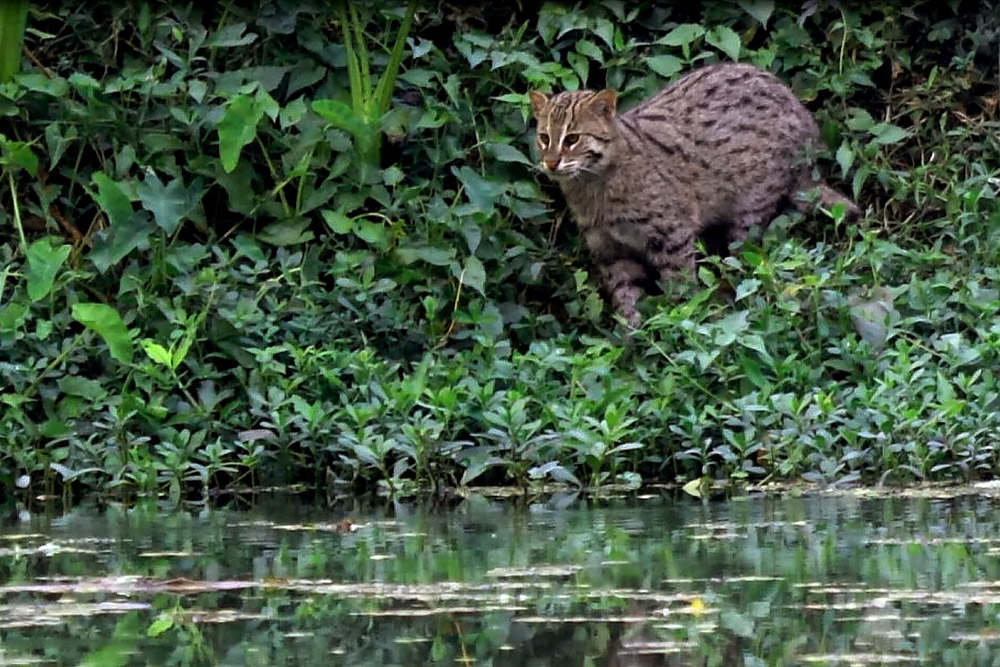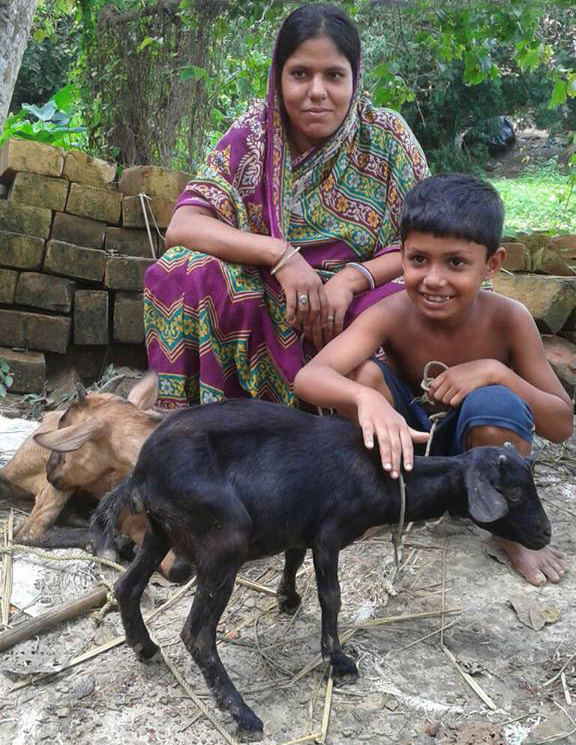A community-owned and managed seed goat bank – this was what a local NGO, Sarada Prasad Tirtha Janakalyan Samity, started last year to decrease loss of goats due to fishing cat depredation.
Go-Bagha is one of the local names for the fishing cat. Go is rooted in Goru meaning Cow. According to a local myth, if a cow gives birth to a still-born calf, then the calf will be re-born as Go-Bagha.
Black Bengal goats (small country goats) weighing around 4-6 kg are occasionally preyed upon by fishing cats, which are common amidst the high density human use landscape, which is full of reed beds in the Howrah district. Often, the locals say they would kill the cats upon sighting to avert a potential loss of their livestock to the cat.
Soon an opportunity came knocking on the door for a deeper investigation. This was in the form of ‘Mud on Boots’ – a program by Sanctuary Nature Foundation to fund grassroots conservationists. Mr Joydeb Pradhan, a retired government official had been working on spreading awareness about the fishing cat since 2010 and was chosen by the program.
Following this, a conversation with Dr Vidya Athreya (who’s worked extensively on leopard conflict) led to the idea of forming a goat “bank” and replacing losses with a “goat for a goat” that would also be managed by the community. Mr Pradhan further improved upon the plan. He suggested giving economically backward Schedule Caste families pregnant female goats.
Black Bengal goats give birth twice a year to 8 kids in total. One kid was to become part of the community owned and managed seed goat bank each year. If a neighbour’s goat was killed by a fishing cat, s/he would get the goat kid as replacement from his/her own community.
The news spread to 18 villages in the vicinity – if a fishing cat takes a goat, the incidence was to be reported.
We were surprised and anxious at the lull for 9 months. No goat reports. On the tenth month, suddenly there were 6 reports.
This was August. Where did this happen and why?
Community maintained records said that predation happened in two small hamlets hemmed in by reed beds from all sides. Starting end of summer, all ponds are dried up and the fish caught and sold off. The ponds get refilled by fresh rain water. After the fisherfolk are certain that no floods would occur that year, fish fingerlings are released into the water.
Does the scarcity of main prey at a particular time of the year make the goats vulnerable to opportunistic predation? Does the location of village determine whether more goats would be attacked?
We don’t know but what we do know is that there is a realization among the community that goat depredation is not as common as believed. In one year only 6 goats in 18 villages were killed by the fishing cats.
Previously, they used to chase off the cat from the goat it had killed and sell the goat meat. Now they leave the goat in the hope that the cat would satiate its hunger and not return to attack more goats. Also they know that they will get an entire goat immediately from their neighbour who has the goat ”bank”.
Perhaps such models, which are locally managed by the communities, and which do not involve money payments, are the way to go forward in addressing loss of livestock to wild predators in India.
The problems of long multiple trips to the forest department to process claims, the irritation towards the animals when the system is not just or transparent is avoided. Furthermore, often, people in India share space with wild animals due to social and/or cultural reasons. Then do we want to bring monetary factors to upset what is otherwise a very old history of shared spaces or do we look at community managed low cost more efficient systems like Pradhanji has devised?
However, it should be noted that community-based schemes could be affected by local politics. In this case, it could be tackled due to the personal relationships that was built with members over the years. The process still requires considerable hand-holding. We are not yet sure of our exit strategy but are hopeful that such a strategy will evolve when the process becomes self-sustaining over time.



 CI is a non-profit, non-commercial portal that aims to facilitate wildlife and nature conservation by providing reliable information and the tools needed to campaign effectively.
CI is a non-profit, non-commercial portal that aims to facilitate wildlife and nature conservation by providing reliable information and the tools needed to campaign effectively.